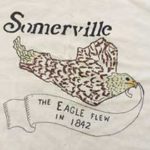 Eagle Feathers #250 – The mayor of Union Square
Eagle Feathers #250 – The mayor of Union Square
By Bob (Monty) Doherty
Robert Aldersey Vinal was the oldest of eleven children. Born in Boston, he was three years old when his parents moved to Somerville/Charlestown in 1824. It was here that his father, a grain dealer, and his mother, Lydia Stone, resided until his father’s death in 1867. This place would become known as Union Square.
In 1872, the homestead location became the four-floor, fifty-room Hotel Warren. It was named in honor of the Bunker Hill hero, Joseph Warren. Today, one hundred fifty years later, 40 Union Square houses a Citizens Bank.
Following in their father’s footsteps, Robert and his younger brother Quincy took over his grain business on Lewis Wharf, Boston, and worked together for fifteen years. After inheriting a large track of land on the southern slope or Walnut Street side of Prospect Hill, they built small houses in the Greek Revival style.
*
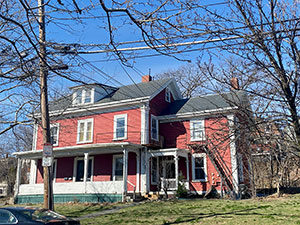 *
*
They and their friend Edwin Munroe subdivided their lands with the forethought of selling them to Boston and Charlestown businessmen. As time went by, they were remembered by the streets, avenues, and ways they created – Vinal, Aldersey, Quincy, Stone and Munroe. In 1842, only the top circle of Munroe Street and Boston Avenue at historic Prospect Hill’s summit had been laid out. At that time, 1,013 residents lived in Somerville. The population grew slowly until after the Civil War’s real estate boom.
*
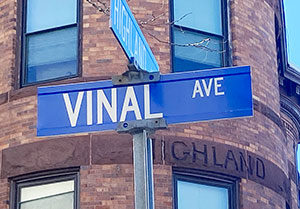 *
*
It was at this time that Robert’s business abilities blossomed. During his era, his opinion became a great asset in the betterment of Somerville and few activities flourished without his support. He was social, religious, patriotic, civic minded, and otherwise a crusader to the maximum. He was a member of many clubs, lodges and committees. He was also a Massachusetts State Representative during the Civil War, an incorporator of the Somerville Saving Bank, an original Water Board member, a Town Treasurer, and a Selectman when the town changed to city government in 1872.
*
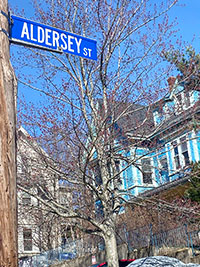 *
*
In 1852, he built the first large mercantile building in Union Square. Vinal’s Franklin Hall was a framed structure that served as a post office, grain and grocery store, and a hall for meetings and entertainment. The Franklin Institute, a library and debating association, also held meetings in the building.
This was followed by other developers who helped to build Union Square as solid as a brick. Quincy A. Vinal once said, “I have stood on Prospect Hill in the fall and counted thirty kilns of brick burning at one time on Mr. Hawkins land near Cambridge.” Before mechanized presses, Somerville produced 1.3 million bricks annually. After mechanization, they produced 5.5 million.
*
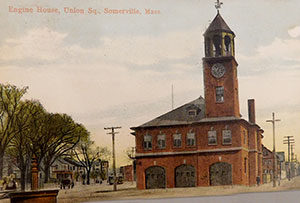 *
*
Robert was a volunteer firefighter on Somerville’s original fire company located at Washington and Prospect Streets. He was the department’s third Chief Engineer from 1854 to 1857 and later the Somerville Firemen’s Relief Association’s first secretary and its treasurer for seventeen years. In 1874, the Union Square ladder truck was named in his honor, Robert A. Vinal Hook & Ladder No. 1. When he died three years later, the public gathering was memorable and every fire company in the city turned out for the service.
Today, a vintage Greek Revival style house built in 1845 is the oldest remaining structure in the square. It is now the Mid-Nite Convenient store located at 15 Union Square and was originally owned by Robert Aldersey Vinal – the unofficial “mayor” of Union Square.
*
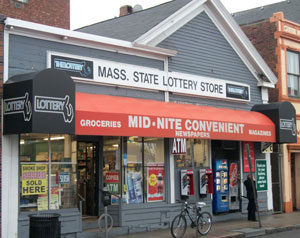













Reader Comments